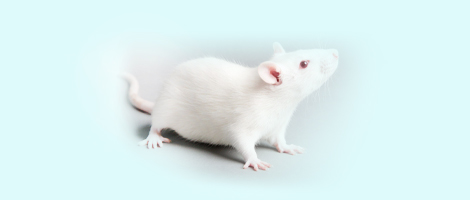| 1 |
BRANDON A E, LIAO B M, DIAKANASTASIS B, et al. Protein kinase C Epsilon deletion in adipose tissue, but not in liver, improves glucose tolerance[J]. Cell Metab, 2019, 29(1):183-191.e7. DOI: 10.1016/j.cmet.2018.09.013 .
|
| 2 |
李瑞生, 李晓娟, 高蓉, 等. 食蟹猴微卫星DNA标记遗传监测及多态性分析[J]. 中国比较医学杂志, 2011, 21(8):27-30. DOI: 10.3969/j.issn.1671-7856.2011.08.007 .
|
|
LI R S, LI X J, GAO R, et al. Genetic monitoring and polymorphism analysis using microsatellite DNA markers in Macaca fascicularis [J]. Chin J Comp Med, 2011, 21(8):27-30. DOI: 10.3969/j.issn.1671-7856.2011.08.007 .
|
| 3 |
IKEGAMI K, TAGAWA K, NARISAWA S, et al. Suitability of the Cynomolgus monkey as an animal model for drug absorption studies of oral dosage forms from the viewpoint of gastrointestinal physiology[J]. Biol Pharm Bull, 2003, 26(10):1442-1447. DOI: 10.1248/bpb.26.1442 .
|
| 4 |
杨畅. 自发性糖尿病肾病食蟹猴生化与肾脏显微形态学的比较研究[D]. 昆明: 云南大学, 2016.
|
|
YANG C. A comparative study on biochemical criterion and kidney micromorphological characteristics in spontaneous diabetic nephropathy Cynomolgus monkey[D]. Kunming: Yunnan University, 2016.
|
| 5 |
杨永立, 李锋, 汪云龙, 等. 高脂血症食蟹猴模型的建立及分析[J]. 实验动物科学, 2019, 36(4):31-34. DOI: 10.3969/j.issn.1006-6179.2019.04.008 .
|
|
YANG Y L, LI F, WANG Y L, et al. Establishment and analysis of hyperlipidemia model in Cynomolgus monkey[J]. Lab Anim Sci, 2019, 36(4):31-34. DOI: 10.3969/j.issn.1006-6179.2019.04.008 .
|
| 6 |
YU Y J, LI Z C, TIAN J L, et al. Why do people gain belly fat in rural areas? a study of urinary Metal(loid)s and abdominal obesity in China[J]. Environ Sci Technol, 2023, 57(21):7938-7949. DOI: 10.1021/acs.est.2c09464 .
|
| 7 |
IQBAL J, WU H X, HU N, et al. Effect of glucagon-like peptide-1 receptor agonists on body weight in adults with obesity without diabetes mellitus-a systematic review and meta-analysis of randomized control trials[J]. Obes Rev, 2022, 23(6): e13435. DOI: 10.1111/obr.13435 .
|
| 8 |
CONWAY B, RENE A. Obesity as a disease: no lightweight matter[J]. Obes Rev, 2004, 5(3):145-151. DOI: 10.1111/j.1467-789x.2004.00144.x .
|
| 9 |
胡煜琳, 杜晓刚. 血脂水平及血脂异常不同临床分类与糖尿病肾病的相关性及预测价值研究[J]. 四川大学学报(医学版), 2023, 54(5): 1013-1018. DOI: 10.12182/20230960103 .
|
|
HU Y L, DU X G. Blood lipid indicators and different clinical classifications of dyslipidemia and diabetic kidney disease: Correlation and predictive value[J]. J Sichuan Univ (Med Sci), 2023, 54(5): 1013-1018. DOI: 10.12182/20230960103 .
|
| 10 |
POWELL-WILEY T M, POIRIER P, BURKE L E, et al. Obesity and cardiovascular disease: a scientific statement from the American heart association[J]. Circulation, 2021, 143(21): e984-e1010. DOI: 10.1161/CIR.0000000000000973 .
|
| 11 |
张晓英, 韩彦渊. 内脏脂肪组织及其评估指标与糖尿病肾病的研究进展[J]. 临床医学进展, 2023, 13(7): 11594-11600. DOI: 10.12677/ACM.2023.1371622 .
|
|
ZHANG X Y, HAN Y Y. Visceral adipose tissue and its evaluation index and the research progress of diabetic nephropathy[J]. Adv Clin Med, 2023, 13(7): 11594-11600. DOI: 10.12677/ACM.2023.1371622 .
|
| 12 |
ROBBINS S. Ginger supplementation may improve fasting blood glucose, hemoglobin ale, and blood pressure in adults with type 2 diabetes[J]. Herbalgram, 2023(137): 1-2.
|
| 13 |
时黛, 顾雯, 李晓英, 等. 代谢综合征患者血脂、血糖、血压及炎症介质与血清胰岛素生长因子-1的相关性[J]. 贵州医科大学学报, 2023, 48(10):1199-1203. DOI: 10.19367/j.cnki.2096-8388.2023.10.012 .
|
|
SHI D, GU W, LI X Y, et al. Correlation of serum insulin growth factor-1 with blood lipid, blood glucose, blood pressure and inflammatory mediators in patients with metabolic syndrome[J]. J Guizhou Med Univ, 2023, 48(10):1199-1203. DOI: 10.19367/j.cnki.2096-8388.2023.10.012 .
|
| 14 |
SHIFERAW B, TAGESECH Y, ESHETE M A. Dyslipidemia and associated factors among diabetic patients attending Durame General Hospital in Southern Nations, Nationalities, and People's Region[J]. Diabetes Metab Syndr Obes, 2017, 10:265-271. DOI: 10.2147/DMSO.S135064 .
|
| 15 |
张姗姗. 脂质代谢指标与2型糖尿病患者腹部脂肪分布的相关性研究[D]. 长春: 吉林大学, 2023. DOI: 10.27162/d.cnki.gjlin.2023.006556 .
|
|
ZHANG S S. Correlation of lipid metabolic indexes with abdominal fat distribution in patients with type 2 diabetes mellitus[D]. Changchun: Jilin University, 2023. DOI: 10.27162/d.cnki.gjlin.2023.006556 .
|
| 16 |
陈畅. 肥胖症患者非酒精性脂肪肝病临床特征分析及相关危险因素探索[D]. 济南: 山东大学, 2023. DOI: 10.27272/d.cnki.gshdu.2023.006983 .
|
|
CHEN C. Analysis of clinical characteristics of nonalcoholic fatty liverdisease in obese patients and exploration of related risk factors[D]. Jinan: Shandong University, 2023. DOI: 10.27272/d.cnki.gshdu.2023.006983 .
|
| 17 |
CHEN Y, ONO F, YOSHIDA T, et al. Relationship between body weight and hematological and serum biochemical parameters in female Cynomolgus monkeys (Macaca fascicularis)[J]. Exp Anim, 2002, 51(2):125-131. DOI: 10.1538/expanim.51.125 .
|







 ), 申果1, 张鹏飞1,2, 石松平1, 胡家豪1, 张绪哲1, 花慧源3, 花冠洋3, 陆宏正3, 曾勇1,4, 季风1,4, 韦祝梅1,4(
), 申果1, 张鹏飞1,2, 石松平1, 胡家豪1, 张绪哲1, 花慧源3, 花冠洋3, 陆宏正3, 曾勇1,4, 季风1,4, 韦祝梅1,4( )(
)( )
)
 ), SHEN Guo1, ZHANG Pengfei1,2, SHI Songping1, HU Jiahao1, ZHANG Xuzhe1, HUA Huiyuan3, HUA Guanyang3, LU Hongzheng3, ZENG Yong1,4, JI Feng1,4, WEI Zhumei1,4(
), SHEN Guo1, ZHANG Pengfei1,2, SHI Songping1, HU Jiahao1, ZHANG Xuzhe1, HUA Huiyuan3, HUA Guanyang3, LU Hongzheng3, ZENG Yong1,4, JI Feng1,4, WEI Zhumei1,4( )(
)( )
)